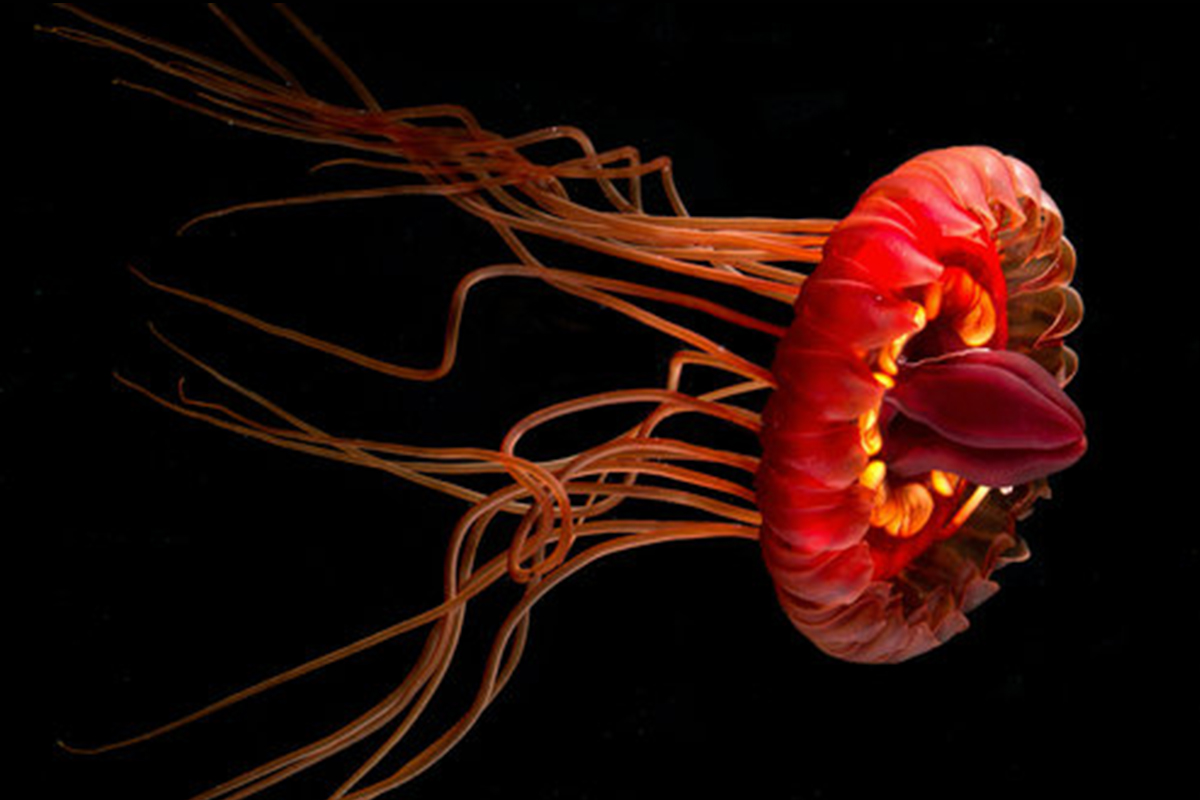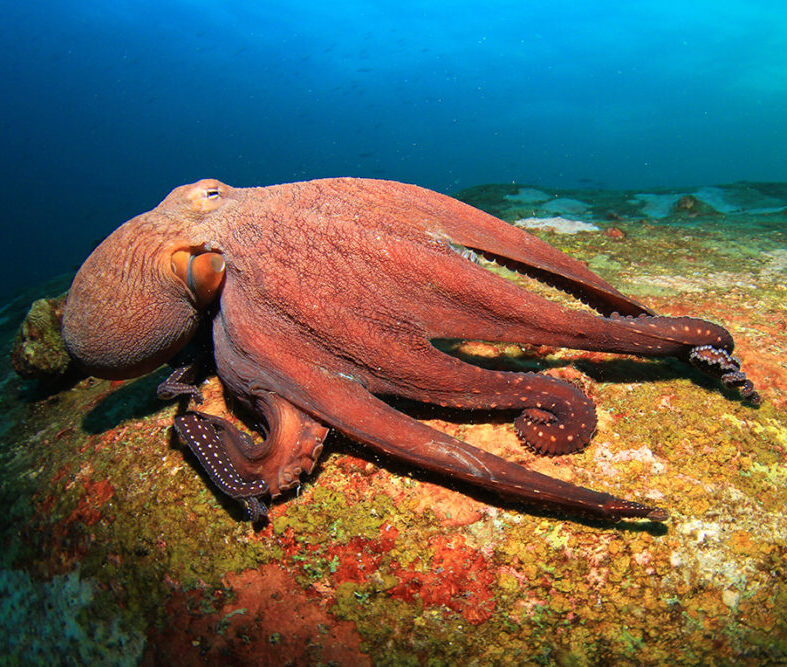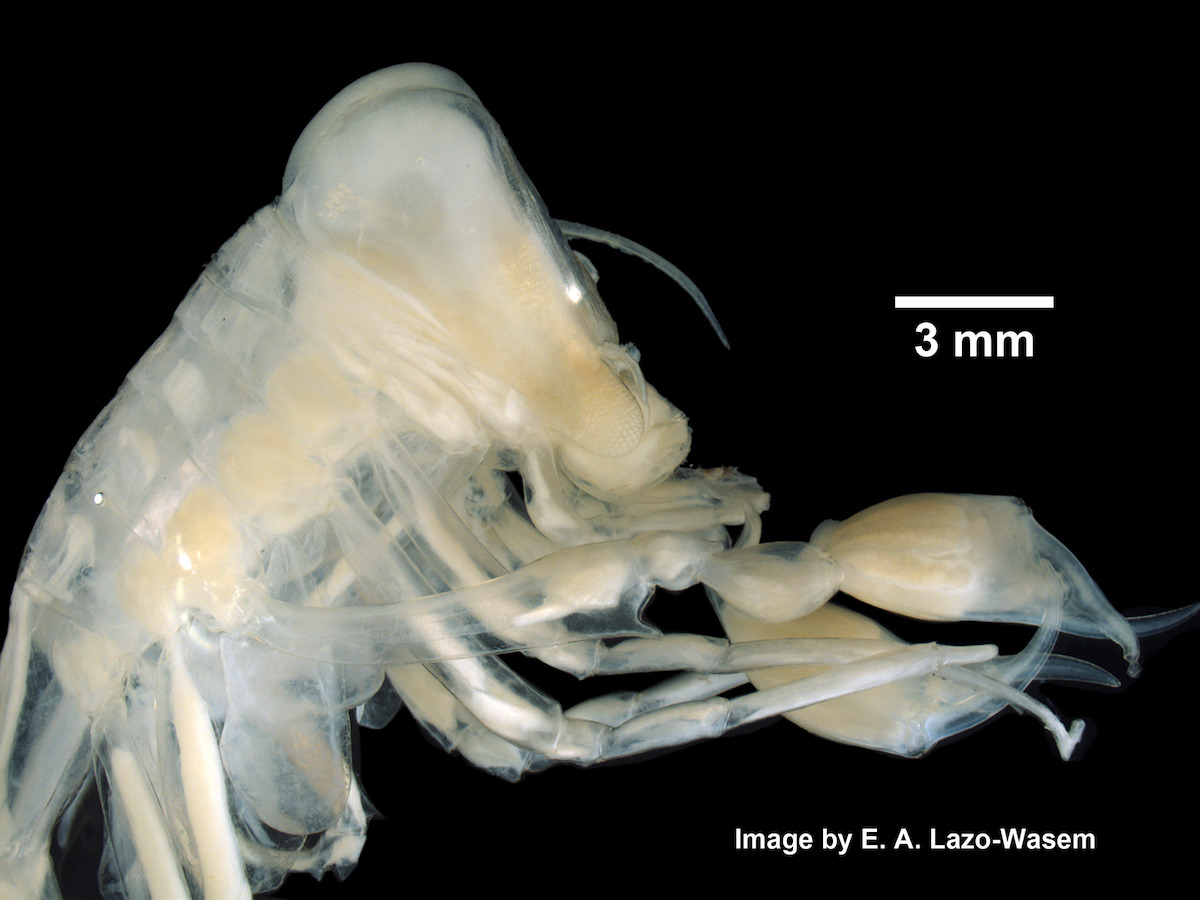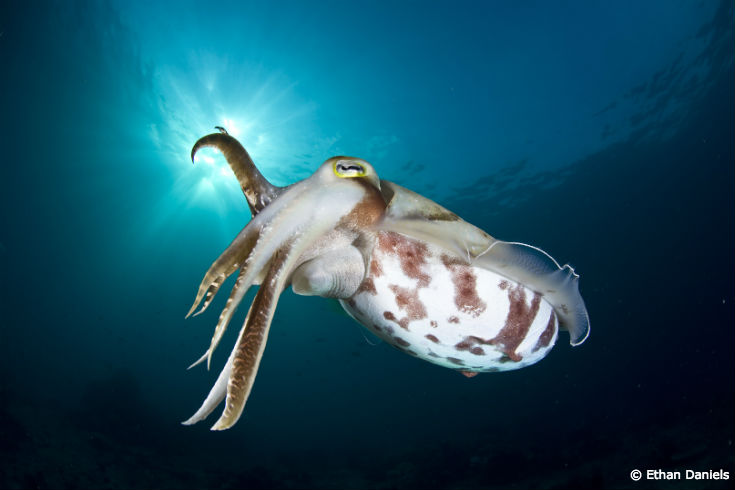Aliens From the Deep
Ocean creatures have inspired some of the most famous Hollywood extraterrestrials

Many of us look up to the stars and wonder if there’s life up there. I look down into the deep ocean and while it is on our planet, it is as mysterious, or perhaps even more so. And we know there is life down there—very, very weird life. Every once in a while, a new species is discovered in the ocean that makes you think is this a joke? There are creatures that look like silly string, blobfish and the unfortunately named “Grumpy Cat” of the ocean: the sarcastic fringehead.
It’s not surprising that when humans dream up aliens from far off planets they tend to seek inspiration from those otherworldly weirdos down below. After all, Jules Verne, one of the first science fiction writers, was not only fascinated by what humans might find on the moon but what lurked Twenty Thousand Leagues Under the Sea.
Kang and Kodos in The Simpsons

Facehugger in Alien

The Martians in War of the Worlds

The Heptapods in Arrival

The director of Arrival looked at all sorts of ocean creatures for the design of the movie’s extraterrestrials, especially cephalopods like squids, octopuses and cuttlefish. Unlike their Earth cousins, the heptapods in Arrival have seven tentacles which is a significant choice. Most animals on earth have some sort of symmetry. Cephalopods are bilaterally symmetrical, which is a big fancy word you can use at parties to say that their left side matches their right side just like us! That symmetry affects how our brain and neural networks work. By choosing to go with an odd number, the heptapod’s designers are signaling that this alien thinks in a way different than us, which is (itty bitty spoiler alert) the central theme of the movie. However, not having two sides means they probably lose their ability to multitask as brilliantly as the cuttlefish. If swimming between an attractive female and a rival male they can transform half of their body into the appealing colors of love while switching the other half to a pattern that will make the other male back off. Sometimes two halves are better than one with seven tentacles, or… something like that.
The wonder of the ocean has been inspiring human storytellers since the dawn of time. Whether they are cast as alien creatures or down to earth heroes, we can thank them for sparking our imagination and delighting audiences everywhere. They might not be in the running for an Oscar, but they each deserve an award all the same.